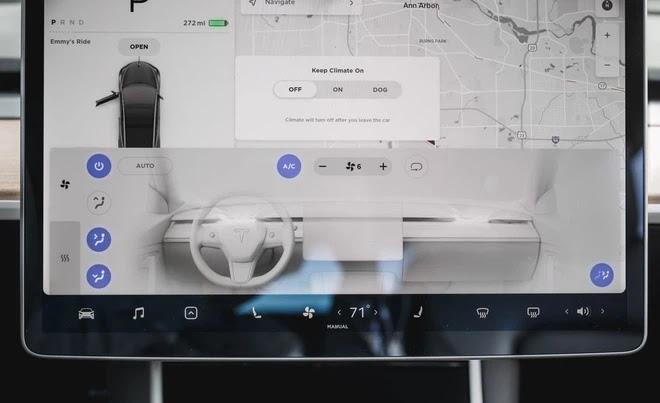Consumers who own electric vehicles are always mindful of the amount of energy their boxers use in traveling. This is crucial information that will always be available whenever they want, because basically, the driver is driving a walking computer, ready to give information whenever the user needs to access the data.
Whether the performance figure appears in watt-hours per mile (unit: Wh / mi) as in a Tesla, or miles traveled per kilowatt-hour (kWh), the unit is commonly found in many electric vehicles. Other, drivers still want to know how much electricity they spend on each distance. Calculating the old numbers, they can plan for the long distance ahead.
However, the amount of electricity used by the powertrain used, the car air control devices, among other small systems, are only part of the overall "efficiency" concept of an electric vehicle. . In an internal combustion engine vehicle, the two factors "efficiency" and "energy consumption" are similar. But in electric vehicles, the relationship in energy consumption is more complicated than that.
Energy is not only lost during charging, but also when the vehicle is in the parking lot and no electricity is used. Obviously, battery technology is more complicated than filling a car with gasoline. Estimates show that electric vehicles can use 12-15% more of the energy put into batteries on a single charge; some dissipate over time, some are converted to heat released into the environment, and some of the energy is used to stabilize the battery temperature during charging.
In the Tesla Model Y 2021 parameter analysis document, users need to charge 87,869 kWh to put 77,702 kWh of electricity into the battery, a difference of 13%. In the manual for the Model 3 version of Tesla, users are warned that with every day the car is not running, the battery will drop by about 1%. Practical testing shows that this figure can be up to 12% when the outdoor temperature drops to -23 degrees Celsius.
The performance of an electric vehicle is usually measured in MPGe - Miles per gallon gasoline equivalent, roughly translated as the number of miles equivalent per gallon of fuel, indicating the average distance traveled per unit of energy it uses. use. The US Environmental Protection Agency (EPA) announced the MPGe unit in 2010, intended to be used in comparing the amount of energy consumed by electric vehicles compared to other fuel-using vehicles. Every electric vehicle activity that uses electricity will be included in the MPGe calculation, whether it's electricity for travel, air conditioning, or turning on the wipers.






Post A Comment:
0 comments: